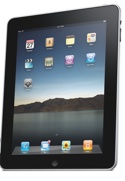Although the majority of rear-seat entertainment usage is likely to be based on BYOD [bring your own device], ABI Research (www.abiresearch.com) forecasts that the number of embedded original equipment manufacturer [OEM] supplied rear-seat entertainment displays shipped in cars will increase to reach 13.3 million units globally by 2020.
Rear-seat entertainment systems, typically incorporating DVD players, have been offered by OEMs and numerous aftermarket suppliers for many years. However, the higher bandwidth of LTE and its increasing coverage in North America, Europe and other parts of the world means that OEM Wi-Fi hot spot solutions will enable a host of new in-car applications such as video streaming, gaming and even video-conferencing, as well as enabling multiple devices to be connected simultaneously.
“Although we expect the majority of people to use their own smartphone or tablet devices in the back of the car rather than pay for an expensive embedded in-car solution, embedded solutions offer certain benefits such as better reception, particularly at high speeds, as they use the larger vehicle antenna,” says Gareth Owen, principal analyst at ABI Research. “The displays are likely to be bigger as well. Flip-down 16.2-inch ultra-wide screens that can display wide-screen content natively or can be split to display two different sources side-by-side are already being introduced by some OEMs such as Honda in its Acura brand. Rear-seat passengers could connect their smartphones or tablets to enjoy, for example, a better gaming experience.”
In addition to selling hardware, OEMs are also looking at the potential of generating recurring revenues by selling services such as branded VoD services and could also team up with hardware and service providers to offer a bundled service with their vehicles.
“Rear-seat entertainment based on embedded screens will probably always be a niche market and confined to the luxury car brands although there could be a healthy market in customized mounts, either OEM branded or aftermarket, to improve the BYOD viewing experience” says Dominique Bonte, vice president and practice director, ABI Research.

![[NPL] Combadge 1.0](https://www.mactech.com/wp-content/themes/Extra/images/post-format-thumb-text.svg)
